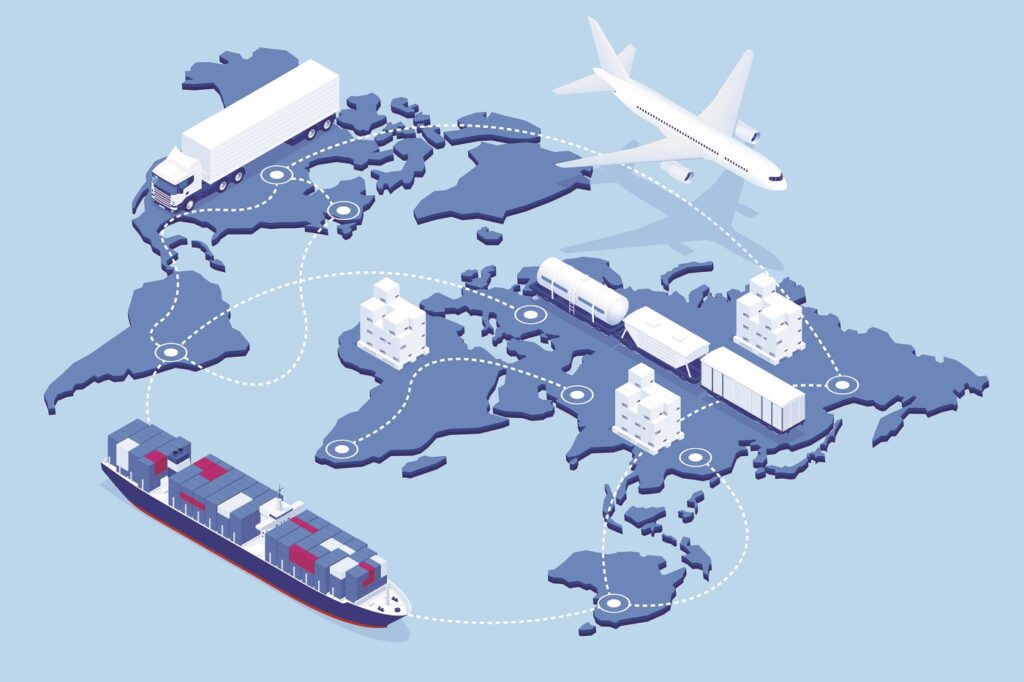Certain changes stemming from the COVID-19 pandemic are easier to spot on construction jobsites than others. Social distancing, face masks, hand sanitizing stations and other precautions deemed the “new normal” for essential operations during the crisis are highly visible. But there are other changes that are harder to spot unless you look further into the construction process.
One that has potential for longer-term disruption is the flow of equipment and materials onto the jobsite. While only limited “breaks in the chain” are being reported thus far, there is potential for increasing challenges as delayed projects open back up and new construction activity gradually starts to emerge.
According to an April 23 survey of AGC members, 38% of contractors reported project owners halting projects underway in March, with 10% cancelling projects altogether. The numbers for April were 31% and 19%, respectively. Another 16% of respondents reported cancellations already for projects scheduled to start in both May and in June or later.
Today, we have the COVID-19 crisis. Last year, we had trade wars and tariffs. Prior to that, there were component shortages for passives. Supply chain disruptions abound; the only thing for certain is that there will be more to come in the future. The companies that had proactive resilience planning and that had acted ahead to mitigate structural risk from their supply chain are the ones that are coping far better than others.
Diversify Sources
We not only need to diversify to eliminate single sources, but we also need to eliminate sourcing from a single region or country. A simple but effective strategy is to have a combination of near-shore and offshore suppliers for each component.
A broader strategy is to develop regional supply chains that source and distribute products within a region but can also build redundancy such that if one region is disrupted, suppliers from other regions can step up. In general, the strategy is to diversify to eliminate concentration of risk. For example, if you have a concentration of suppliers at high risk of financial default regardless of the number of sources, then it is prudent to qualify alternative sources that are on a stronger financial footing.
Build Reserves To Absorb Shocks
Usual inventory optimization and safety stock calculations can neglect the element of structural risk. Building on the concept of eliminating single points of failure, it is prudent to carry contingency safety stocks particularly for low-volume parts that might impact the availability of high-value features. In general, we need to develop inventory plans to assure supply over a long horizon taking into account possible shortages as well as obsolescence.
In March, the Department of Defence released some 5 million masks and 2,000 respirators from its stockpile to help states fighting the COVID-19 crisis. Strategic reserves go largely unnoticed until there is a crisis. The United States Strategic Petroleum Reserve holds almost 800 million barrels of fuel as an emergency supply that has been tapped from time to time. The value of having strategic reserves has become abundantly clear in recent times.
Predict, Sense And Respond With Agility
The best performing procurement teams operate with an “outsideinside” mind-set. They stay on top of market trends for their customers, their products, their suppliers, the latest design practices and emerging technology trends in their industry. They subscribe to content services that help consolidate such sources of insight to anticipate opportunities and risks and take proactive action long before their competitors. For instance, you can anticipate end-of-life based on typical part lifespans or directly from supplier notices and take proactive action to mitigate impacts pre-emptively. Another example is that of financial default. You can monitor leading indicators of a supplier’s financial health to anticipate risk of default.
Additionally, we also need to be mindful of single sources that could be created from ripple effect of other risks. For instance, financial default or obsolescence of one source within a dual sourced component will create a high-risk single source situation. There will always be events that were unanticipated. However, the best performers establish processes with virtuous learning cycles.
Estimating Structural Risk Across Your Supply Portfolio
As we have seen, it is important to recognize the structural risk across your supply portfolio and establish clear playbooks on when and how to respond to a wide range of risk events. Routine disruptions are frequent but low impact events such as unanticipated demand, port delays or limited factory closures, such events are part of day to day operations and need to be handled automatically with contingencies such as safety stocks and automated re-planning.
Moderate risk events require both proactive measures such as leveraging diversity of alternate sources as well as reactive actions such as expedited shipments followed by shifts in sourcing splits. Finally, it goes without saying that a proactive assessment of structural risk can expose structural flaws where there are high impact events that are also highly likely. Examples of these include single sourced components nearing end-of-life or those that are sourced from suppliers at high risk of financial default. Such situations need to be eliminated immediately.
As you have seen, digital transformation is not about one shiny artificial intelligence technology or another. Instead, it is about building a pervasive capability for informed and timely actions. Information systems must be grounded in processes that continuously maintain data integrity, as data driven insights and decisions drive superior performance.
By Amrita Batra



